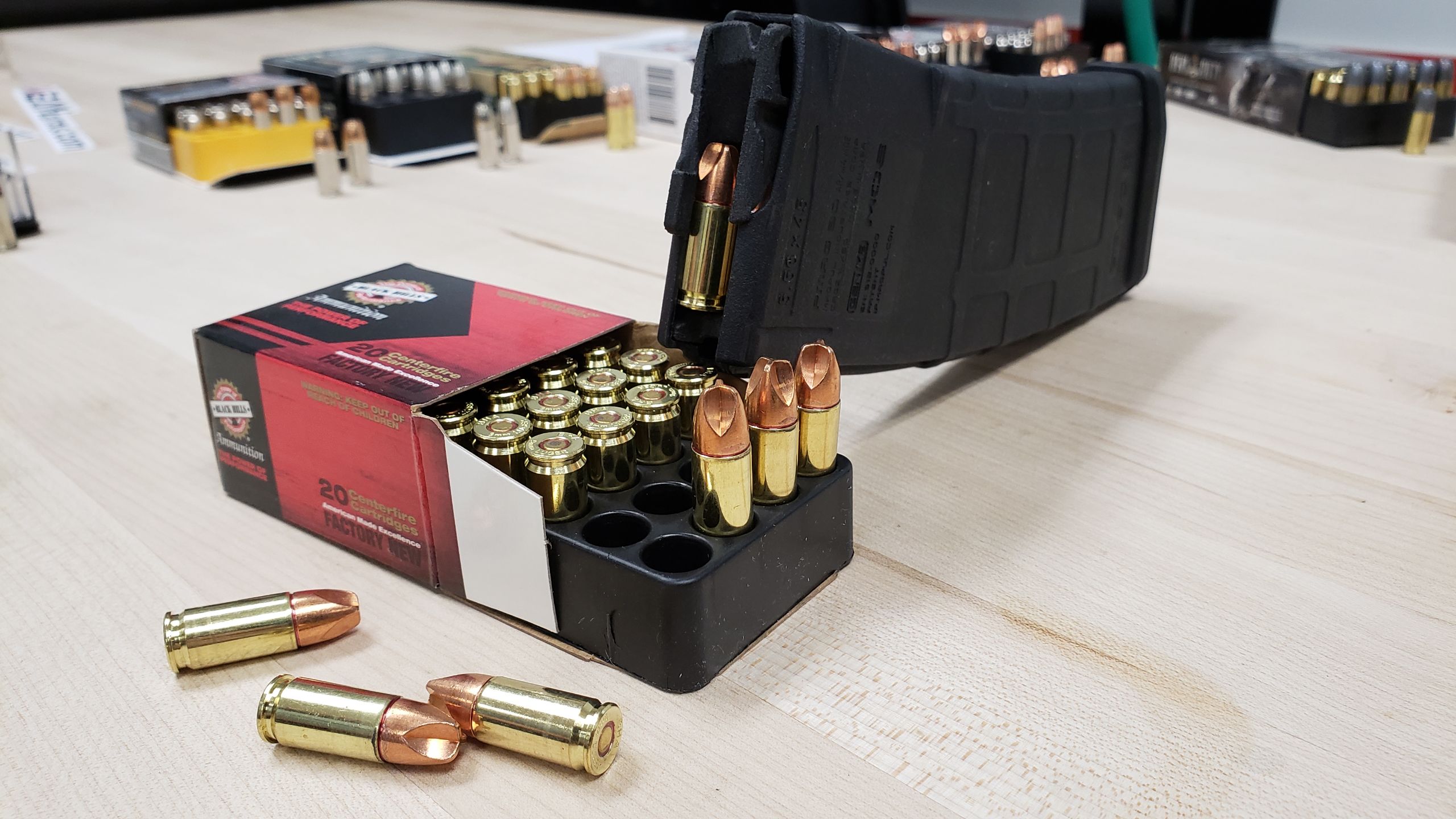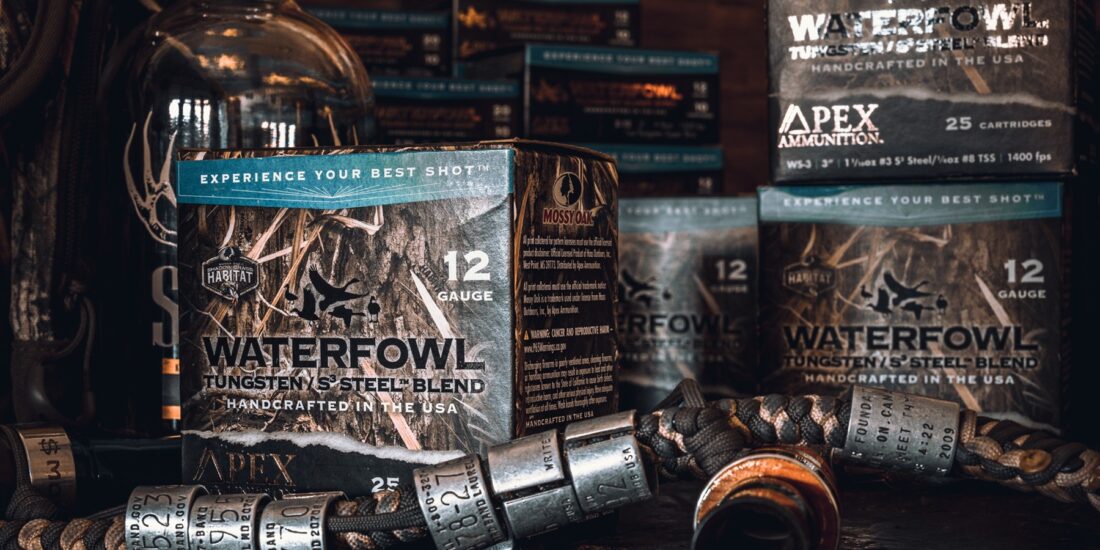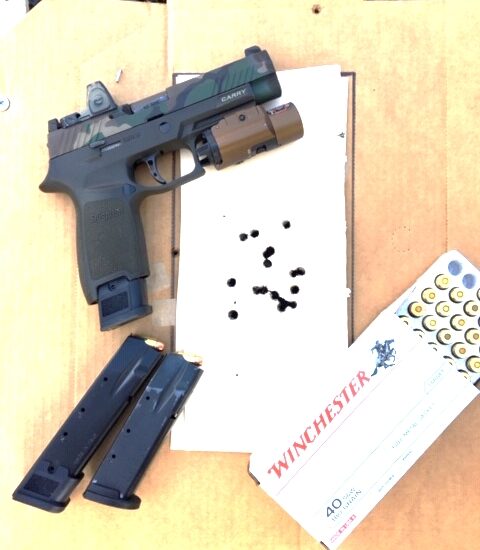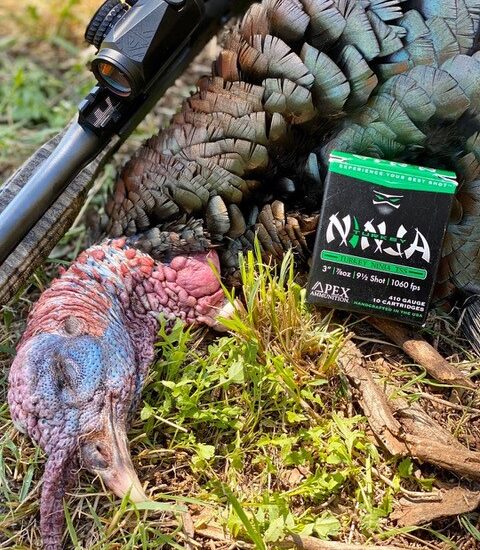Handgun Bullet Selection: Fast & Light vs. Heavy & Slow

I taught a class Sunday night and one of the questions that came up was about bullet selection…specifically 9mm and whether a fast+light bullet is better than a heavy+slow bullet.
I fumbled with the answer because of how involved it is…so I’m going to try to simplify it here.
I’ll start by saying that I carry both…and I’ll tell you why at the end.
One big argument for fast+light bullets is the fact that Kinetic Energy=1/2 * Mass * Velocity * Velocity. So, a faster bullet has a lot more energy, both at the muzzle and when it hits a target.
But energy doesn’t tell the whole story or we’d shoot each other with Nerf bullets at 10,000 feet per second.
One of the big reasons we don’t do this is because of momentum.
Momentum is mass * velocity.
And a heavy slow bullet (147gr 950fps 9mm) that has 40% less energy at the muzzle can have 40% more momentum at the threat than the fastest light bullet (50gr 2000fps 9mm).
And when a bullet hits a threat, it’s momentum + mass that’s going to let it continue on a straight path, even after hitting obstacles (like thick clothing, phones, skin, etc.) or muscles and bones.
Football gives us a good illustration.
A faster, lighter halfback can bounce off of the line and dart through gaps. They’re more unpredictable.
A beefier, heavier fullback tends to plow through obstacles more than bounce around.
The impact that hitting obstacles has on momentum doesn’t really show up on ballistic gelatin.
A light bullet is going to tend to lose a higher percentage of it’s speed (and momentum) as it’s going through barriers/obstacles than a heavy bullet and a light bullet is more likely to be deflected.
We want our defensive handgun rounds to penetrate as far as possible without over-penetrating.
Ironically, another problem with fast+light bullets is that they also OVERpenetrate more than heavy+slow bullets. They exit the body without transferring all of their energy to the threat.
With heavy+slow rounds oftentimes the skin or clothing on the opposite side of the body “catches” the round because it’s used up all of it’s energy defeating obstacles and destroying tissue.
Hunters have figured this out and tend to use heavier bullets for penetration and lighter bullets when they want the bullet to dump it’s energy as fast as possible…like what you’d want on a prairie dog, small coyote, or other similar animals.
What about massive permanent wound channels that you see in ballistic gelatin when people shoot it with light+fast bullets?
There are 2 parts to this.
First, as terminal ballistics expert, Dr. Gary Roberts points out, when we see “massive” wound channels in ballistic gelatin from pistol rounds, it’s normally not because of the speed of the bullet but when it starts tumbling.
Second, when you shoot an object, the hole is going to expand as the bullet goes through it and make a temporary channel that’s bigger than the bullet.
The elasticity of the object or the elasticity of the connective tissue is going to pull the temporary channel back to where it’s roughly the size of the projectile…
UNLESS the velocity of the expansion of the object is so fast that it overwhelms the elasticity of the object or defeats the connective tissue. Then you get a permanent cavity that’s larger than the projectile. Simply put, flesh tends to snap back better than ballistic gelatin, so gelatin shows more extreme permanent cavities than when shooting flesh with pistols.
To get this effect of a permanent cavity on flesh, the projectile needs to be traveling at roughly 2000-2200fps. In the case of self-defense, the bullet will slow down a little as it travels from the muzzle to the threat, then it will slow down through each barrier and layer of clothes, and finally through the skin, at which point, for center-mass hits, it may need to go through muscle and/or bone and THEN it gets to where it can do the work of stopping the threat. Safety guidelines for chamber pressure and barrel length make it next to impossible to have a 9mm round STILL travel at 2000fps after going through obstacles.
At speeds of less than 2200fps, you’re basically looking at poking a target with a pen, screwdriver, or as Chuck Haggard explains, a wooden dowel that’s the same diameter of your expanded bullet.
Heavy bullets tend to go straighter and deeper after hitting obstacles than lighter ones…and do it more predictably.
I mentioned the outlier earlier of a 50gr bullet traveling at 2000fps. More “normal” for a fast+light load is 90gr traveling at 1450-1550fps out of a test barrel that’s probably longer than what you carry. At the muzzle out of a long test barrel, that has as much momentum as a 147 grain projectile going 950fps.
But, as soon as a round starts having to punch through obstacles, speed is going to bleed off and the heavier projectile is quickly going to have more momentum.
Newton has a say
“Every action has an equal and opposite reaction.” This is important for multiple-shot reliability. Simply put, a heavier, slower bullet results in more reliable cycling than a lighter, faster bullet…especially when using a bad grip or one-handed grip (which are more likely to occur under stress).
Barrel length
Many ammo manufacturers don’t say how long the barrel was that they used to get their impressive results. Or whether they tried multiple barrels and picked the fastest one. Regardless, your velocities with your carry pistol will probably be lower than the numbers shown on the box or the manufacturer’s website.
Because of this, some people use lighter bullets in shorter barrels and heavier bullets in longer barrels.
How bullets stop threats
When you’re talking about stopping threats, you can stop them psychologically (they decide not to be a threat anymore…consciously or unconsciously), the system loses pressure/blood volume, or there’s an electrical stoppage from impacting part of the central nervous system (essentially the brainstem & spine).
If you’re aiming center-mass and aiming at the spine, even with the armpits, there’s a good chance that you’ll hit something vital.
But even if you sever the ascending aorta, the threat could stay in the fight for up to 13 seconds. You may not be able to soak up damage for 13 seconds and need to shoot more times to get a desirable change in behavior and stop the threat immediately.
So, in a perfect world, if you hit the aorta, it would be beneficial if the bullet had enough momentum to keep going and impact the spine with enough force to cause an immediate change in behavior.
And a heavier bullet has a much better chance of making it all the way to the spine without being deflected with enough momentum to disrupt the central nervous system.
That immediate change in behavior means the threat will stop being able to hurt people sooner and you won’t need to fire as many rounds. Both of these increase the safety of everyone around.
Shot placement vs. bullet effectiveness
There are some things that you have control of and some things that you don’t.
What the bullet does after it makes initial contact with a threat is something you don’t have control over.
You can pick bullets that have a better chance of behaving predictably and consistently, but there are still no guarantees.
What you do have control over is shot placement.
And, I’d rather have perfect shot placement with a crappy bullet than crappy shot placement with a perfect bullet.
Shot placement is key.
Bullet selection magnifies shot placement.
So, the first priority has got to be developing the skill to be able to automatically deliver rounds to the point in space where they need to go.
And this training is one of the quickest ways to make that happen.
Because you want to be able to stop threats regardless of whether your ammo is awesome or not.
You never know when you may not be able to get hollow points and you have to stop the threat with round-nose practice ammo.
I said at the beginning that I carry both heavy+slow and light+fast rounds.
Why?
Isn’t it dumb to mix rounds?
There are a couple of mixes that I carry, and they are because of unique situations that I have and face.
I actually run into situations where I need to draw my pistol and shoot things a few times a year as I’m going about my business.
Typically, it’s predators trying to get our chickens.
I normally don’t have glasses on and we live in a steep canyon that has very rocky walls.
I’ve caught a ricochet in my cheek bone under my eye and I’m not a fan.
Because of this, my first couple of rounds are fast+light frangibles that disintegrate when they impact rock…rather than possibly returning to sender. I tend to use the same designs used by the Department of Energy.
I know that these are effective, but less than optimal for self-defense and that it will tend to take more effective hits to stop a 2-legged threat in the same time as a heavier bullet.
The rest of the rounds in my mag are 147gr hollowpoints…because I know that they will be more effective at stopping larger threats. I am comfortable carrying any of the 9mm 135 & 147gr loads recommended by Dr. Gary Roberts. Federal Tactical 135 gr +P JHP,
Hornady Critical Duty 135 gr +P PT
Federal HST 147 gr JHP
Remington Golden Saber 147 gr JHP
Speer Gold Dot 147 gr JHP
Speer G2 147 gr PT
Winchester Ranger-T 147 gr JHP
Winchester 147 gr bonded JHP
The vast majority of people…probably the other 99.9999% of people who don’t regularly draw their carry pistol and shoot varmints…are better off carrying a single type of ammo in their magazine.
In my spare mag in my truck, I carry 147gr Outdoorsmans from Buffalo Bore. They are hard cast lead and designed to penetrate larger animals (we live in bear, moose, and mountain lion country). They also perform better through intermediate barriers…like car doors and walls. During the rut, I oftentimes carry these in my main magazine on our property.






